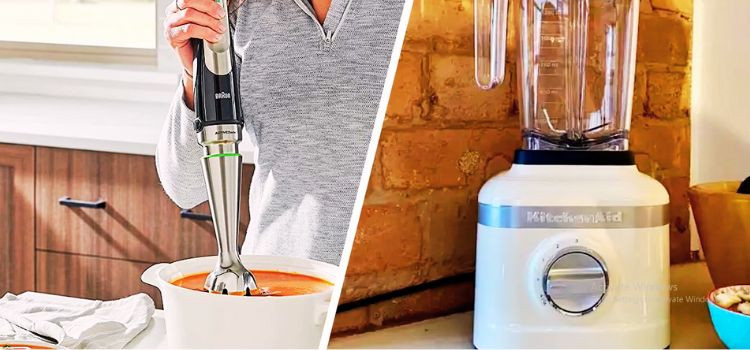HOME | DD
 asderu67 — What to Use Instead of an Immersion Blender
asderu67 — What to Use Instead of an Immersion Blender

#blender #immersion #what #an #use #instead
Published: 2023-07-23 00:13:12 +0000 UTC; Views: 314; Favourites: 0; Downloads: 0
Redirect to original
Description
An immersion blender is a versatile kitchen tool used for blending and pureeing ingredients directly in a container. However, not everyone may have access to an immersion blender or may be looking for alternative methods to achieve similar results. Fear not! There are several ingenious ways to mix, blend, and puree ingredients without an immersion blender. In this article, we will explore some effective alternatives that you can use to whip up delicious recipes without breaking the bank.
Traditional Blender: The traditional countertop blender is a popular alternative to an immersion blender. While it may occupy more space in the kitchen, it offers powerful blending capabilities. Simply place your ingredients in the blender jar, secure the lid, and blend to your desired consistency. This method is especially effective for making smoothies, soups, sauces, and dips.
Food Processor: If you have a food processor, you have another excellent alternative to an immersion blender. Food processors are fantastic for chopping, pureeing, and blending ingredients. They come with various blade attachments, making them versatile enough to handle a wide range of culinary tasks. From salsas to pesto, a food processor can quickly achieve the desired results.
Stand Mixer: For baking enthusiasts, a stand mixer can be a reliable substitute for an immersion blender. While it may not provide the same level of control as an immersion blender, a stand mixer equipped with a paddle attachment can effectively mix and combine wet and dry ingredients. Additionally, stand mixers often come with attachments like a whisk for lighter blending tasks.
Hand Mixer: The hand mixer is a compact and budget-friendly option for those who do not own an immersion blender. Although primarily used for baking, it can be used to blend soft ingredients like cream, eggs, or mashed vegetables. However, it may not be suitable for heavy-duty blending tasks.
Whisk: Sometimes the most straightforward tool can do the trick! A whisk is a classic and effective alternative for blending ingredients like eggs, batter, or sauces. While it may require a bit more elbow grease, whisking can yield excellent results and a sense of accomplishment.
Potato Masher: If your goal is to achieve a chunky consistency rather than a smooth blend, a potato masher can be a handy tool. It is perfect for mashing vegetables, fruits, and legumes, making it ideal for recipes like mashed potatoes, guacamole, or hummus.
Mortar and Pestle: For a touch of tradition and a more rustic approach, consider using a mortar and pestle. While this method takes time and effort, it can be very satisfying, especially when creating pesto, curry pastes, or spice blends.
Conclusion: An immersion blender is undoubtedly a useful kitchen tool, but it's not the only option available. Whether you prefer the convenience of a traditional blender or the versatility of a food processor, there are plenty of alternatives to choose from. Get creative and experiment with these different tools to achieve your desired textures and flavors in various recipes. The key is to find the right alternative that best suits your needs and style of cooking. Happy blending!












